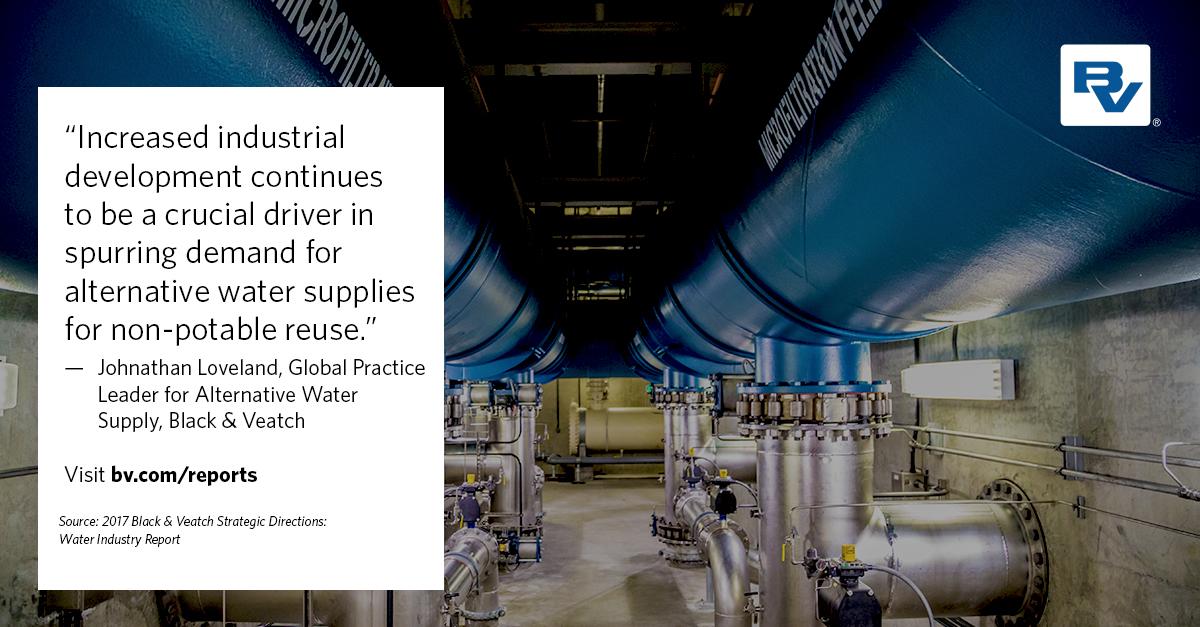Water Supply Diversification Continues Rising to Reach Resiliency, Reliability Goals

Water Supply Diversification Continues Rising to Reach Resiliency, Reliability …
Objectives for developing alternative water supplies to increase availability and improve water system resilience continue as top priorities for resource stakeholders. This year more than 50 percent of Strategic Directions: Water Industry Report respondents cited resiliency as an increasingly important driver for ensuring reliable water system delivery. This indicates that they are open to making the necessary financial investments to achieve resiliency and water sustainability goals.
Download the 2017 Water Industry Report
For example, in the coastal areas of Virginia and the Carolinas, supply challenges are being addressed by recycled water supply initiatives as increasing saltwater intrusion into freshwater aquifers threatens drinking water resources. Survey results also confirm the expected support for water conservation and strong support for non-potable reuse and ground water replenishment. The results also indicate there is less interest in potable reuse in areas where respondents have the ability to develop other, lower-cost alternative water supplies.
The drive for potable reuse is being seen in regions where water scarcity and increasing demand co-exist, such as Florida and the arid Southwest. These areas have already implemented water conservation programs and substantial non-potable reuse programs, and we expect a growing trend for indirect potable reuse and direct potable reuse options. Delivering this capability has the added benefit of avoiding restrictions on water usage caused by periodic or intermittent supply constraints.
Although cost remains the biggest issue for 42 percent of respondents in developing new alternative water supplies, projects are becoming more competitive as utilities’ fixed infrastructure costs and needs for investment continue to increase. These infrastructure repair, replacement and operating costs are independent of the potential investment recovery available for alternative water supply projects. Although these projects are still cost-sensitive, innovative solutions for project implementation, including various types of public-private partnerships, are becoming more popular.

